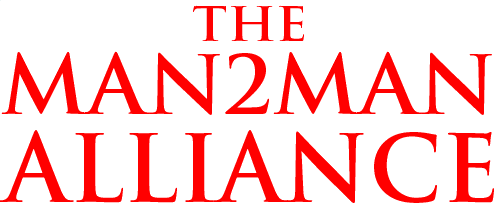


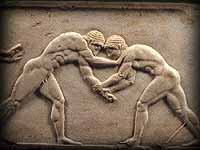

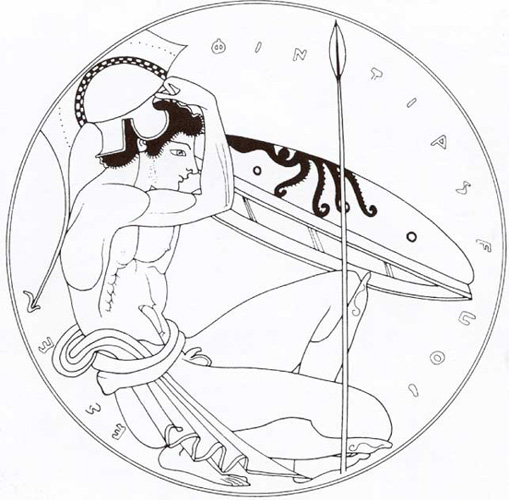





by
Bill Weintraub











by
Bill Weintraub
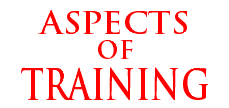
In the warrior's life, first nudity in athletics, then nudity in training, preceded nudity in war.
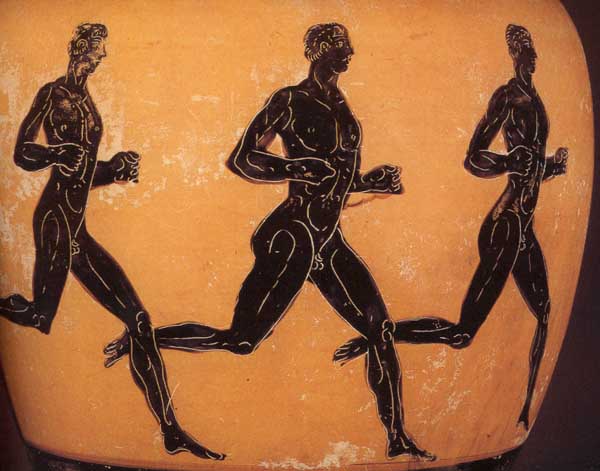
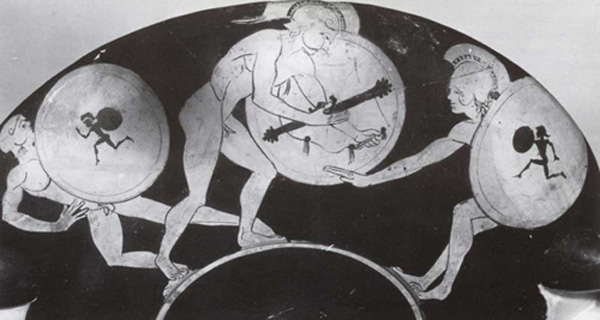
Running nude in armor was a common aspect of warrior training, as well as an Olympic event, and illustrates how, as I describe in the pyramid of homosex, athletic and military training were both eroticized and worked together.
Most of the events in the Olympics had a military or combat theme: wrestling, boxing, running. Ball games, like the Greek form of LaCrosse, were excluded.
In this painting warriors are armed only with helmets and shields, and the shields were probably state-issued for training purposes. In time of war, hoplites were expected to provide their own armament, and for that reason only the relatively prosperous citizen could afford to be a hoplite.

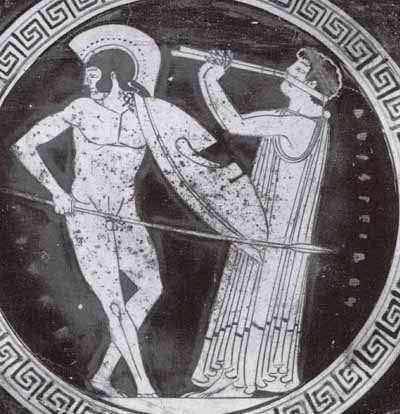
|
The Pyrrhic Dance -- most likely named for Achilles' son Pyrrhus ('Fiery Red') who later became Neoptolemus ('New War') -- was a series of stylized defensive and offensive movements performed to the accompaniment of a flute. (The flute was used in other military settings as well, such as to accompany hymns or paeans (songs of praise) before battle or to help keep hoplites in order during an advance.)
Similar techniques exist in contemporary martial arts. For example, those who've trained in karate will be familiar with "kata," a series of increasingly complex formal movements that have to be learned for the student to rise in rank.
Training such as this is thought to increase reaction time and of course the repertory of moves available to a fighter.
Notice that the warrior here once again carries the basic hoplite equipment of helmet, shield, spear, and greaves, and notice too the phallic position of his spear.
It's likely that the Pyrrhic Dance would have been presented at festivals, such as the Spartan Gymnopaedia, or Festival of the Naked Youths, sacred to Apollo, which included choral dancing.
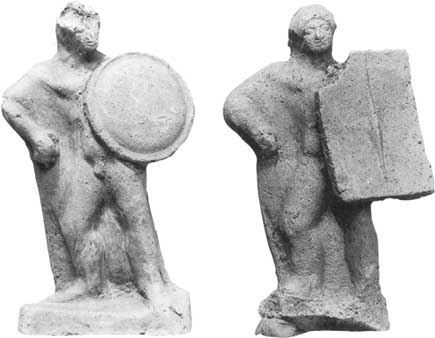
|
The Greeks were not alone in having this sort of exercise. These terra cotta figures, performing a similar sort of dance and dating from the 5th century BCE, are from a tribe called the Veii, an Italic people eventually absorbed by Rome.
And Tacitus speaks of a naked war dance among Teutonic tribal youth in the 1st century AD.
As in the first painting in The Warrior Bond, "Achilles and Patroclus," which has the appearance of a Japanese woodcut, it's interesting to see here an ancient Greek variant on a present-day east Asian martial art, another example of cultural convergence among warrior societies.

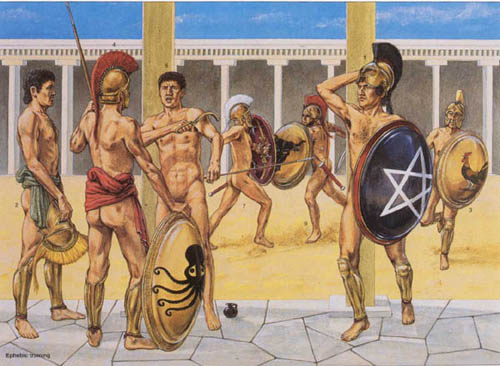
|
In this artist's reconstruction, which was first presented in The Hoplite Formation, the viewer is looking out from the apodyterium or dressing room at the palestra in Athens.
In ancient Greek usage, "ephebe" could mean both athlete and teenager, but in Athens "ephebes" were youths between the ages of 18 and 20 undergoing compulsory military training.
Once again the palestra is doing double duty as both a wrestling school and a military academy, and the men train nude.
On the left a group of men are socializing, a primary function of the palestra.
On the right, two warriors are returning from a run. The warrior on the far right has a shield emblazoned with a cock, perhaps given him by an admirer -- cocks were courting gifts.
And in the center, a warrior is receiving advanced training in one-on-one combat. Such training was not provided by the state -- the ephebe had to pay for it himself. That meant that in the event of the hoplite formation being broken and the battle becoming a melee, those who'd had the money to pay a trainer had a far better chance of surviving.
Life in Athens was democratic, but not always fair.
Ironically, the Spartans, whose government was less egalitarian, had a far more communal approach to warrior training. Consequently, Sparta had unbroken land supremacy in Greece for 200 years

AND

Boxers, hunters, and an erotic Theban alliance that breaks the Spartan line.



© All material on this site Copyright 2001 - 2011 by Bill Weintraub. All rights reserved.
